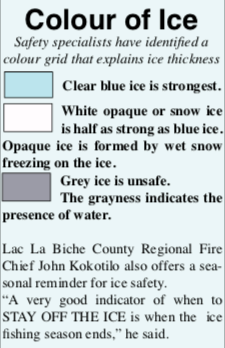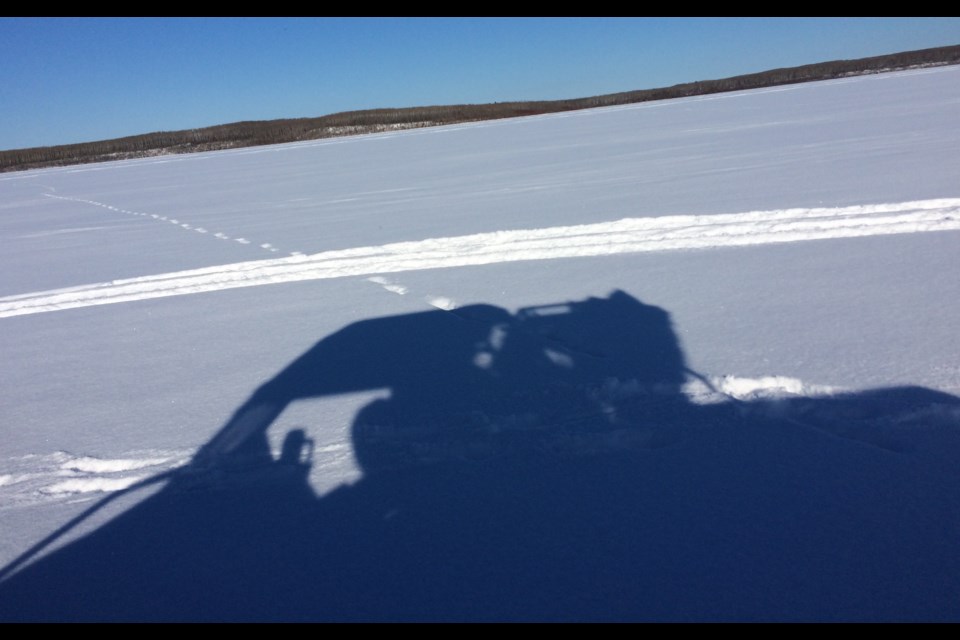Ice conditions on area lakes and water bodies are poor, and so would be the choice to go for a walk on the ice, say local emergency service experts.
With hundreds of named lakes, rivers, streams and ponds across the Lac La Biche and Lakeland areas, plus thousands of water bodies in muskeg and drainage areas, regional officials have one message at this time of year — stay off the ice.
“As warmer temperatures approach it is crucial that the public stays clear of bodies of water as ice thins and the waters edge starts to show,” says Lac La Biche County Enforcement Services Manager Chris Clark.
Little surprises
While larger water bodies might be easier places to explain the dangers, many small, unassuming pockets of ice could hide dangers at this time of year, added Clark.
“Crossing streams, sloughs and other back country bodies of water is extremely risky whether on foot or on ATV. These areas should be avoided as you don’t know how deep the water is,” he said, adding that the water temperature and the still-not-summer air temperatures add to the dangers. “If you do become stuck, you increase the risk of getting wet and the cold water will quickly cause the onset of hypothermia.”
For anyone planning a back-country trip this time of year, it’s a good idea to bring a warm change of clothes and let people know your travel route and travel times.
Lac La Biche County’s Regional Fire Chief John Kokotilo says tragedies around thawing ice are an unfortunate statistic every year. Compounding the dangers in the Lakeland area is the large recreational draw that the water has all year round.
“In Canada, an average of 200 people per year die as a result of cold water immersion,” Kokotilo told Lakeland This Week. “More than half of these deaths occur during recreational activities in the late fall, winter, and spring.. fishing, snowmobiling, ATV use, cross country skiing on water-bodies.”
Pets in peril
Another tragic draw to dangerous ice conditions comes from people’s relationship to animals. Both Clark and Kokotilo said pet owners need to be especially vigilant when it comes to walks around ice-covered areas. They also urge anyone seeing an animal of any kind that is in distress on the ice to avoid going onto the ice themselves..
“It is also equally important that our animals stay off of the ice. If a person or animal does go through the ice, the first thing anyone should do is call 911 and immediately go to a safe area and observe the person or animal that is in the water so the area can be identified to first responders,” said Clark.
Kokotilo, who is also the manager of Lac La Biche’s County’s Protective Services department, says members of the area’s Fire Services are specially-trained for ice rescues, with annual updates to their training.

Don’t go out - Call for help
Living and playing around the lakes makes it imperative to have well-trained professionals protecting them, he said, adding that municipal firefighters often work with other agencies for ice safety.
“Our Fire Services institutes yearly training programs for our members in ice rescue and static water rescue,” he said. “We also cross–train and work mutually with Little Divide Search and Rescue, the RCMP, and Alberta Parks to help ensure emergency response resources are available if required.”
Anyone seeing someone in distress on local lakes in urged to call 911.



